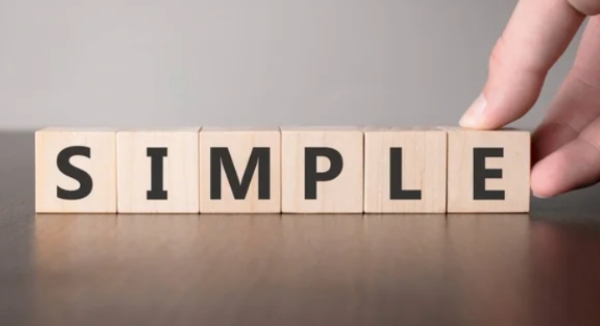
In a world full of complexities and never-ending information overload, simplicity is often seen as a breath of fresh air. From minimalist designs to concise explanations, the notion of simplicity attracts us with its apparent ease. However, it is important to recognize that simplicity is far from being synonymous with being easy. In fact, the path towards simplicity often requires tremendous effort, deep understanding, and a complex thought process. Remember, simple does not always mean easy.
Understanding Simplicity
Simplicity is the art of boiling down complex ideas or concepts into their most fundamental essence. It is about distilling and presenting information in a clear, straightforward manner that can be easily grasped by a wide audience. Simplicity brings clarity and eliminates noise, allowing individuals to focus on the core principles or objectives at hand.
Simplicity’s Illusion
While simplicity may seem effortless on the surface, achieving it is far from being a trivial task. It demands deep knowledge, profound understanding, and the ability to sift through heaps of information to extract the pivotal points. It is tempting to perceive simplicity as a shortcut or an easy way out, but it is important to remember that simplicity is the product of careful analysis, critical thinking, and skillful refinement. The process of simplifying is often complicated, requiring considerable effort to present complex ideas clearly and concisely.
The Art of Simple Communication
Communicating in a simple manner is a skill. Experts across various domains hone this skill. Architects, designers, writers, and scientists, to name a few, strive to present complex ideas in a manner that is accessible to all. This involves breaking down jargon, eliminating unnecessary details, and finding the perfect balance between information and comprehension. Achieving this level of simplicity requires precise planning, organization, and an understanding of the audience’s needs and background knowledge.
Struggles and Challenges of Simplicity
The journey towards simplicity is often filled with obstacles and challenges. It demands the ability to analyze complex issues, identify key elements, and distill them into cohesive and meaningful insights. This requires individuals to cultivate patience, perseverance, and the willingness to dive deep into a subject matter in order to capture its essence.
Also, simplicity requires making tough decisions. It necessitates a careful examination of what to include and what to exclude, as even the most minor details can influence the final result. This constant strive for minimalism often creates a dilemma for individuals who wish to retain accuracy and integrity while avoiding unnecessary complexity.
Therefore, in today’s fast-paced and information-saturated world, simplicity is a fundamental need. However, we should not mistook it for an easy or effortless pursuit. Simple does not mean easy. It demands dedication, expertise, and commitment to the process of distillation. As we navigate through the complexities of life, we must appreciate the hard work invested in achieving simplicity and strive to embrace its virtues. Ultimately, simplicity stands as a testament to human intelligence and creativity, highlighting our ability to cut through the noise and offer clarity in an otherwise complex world



